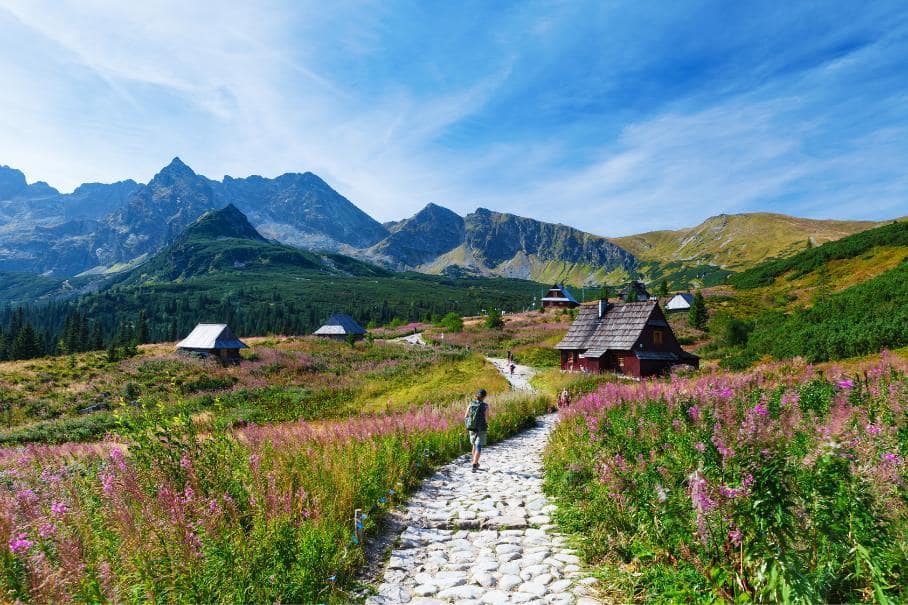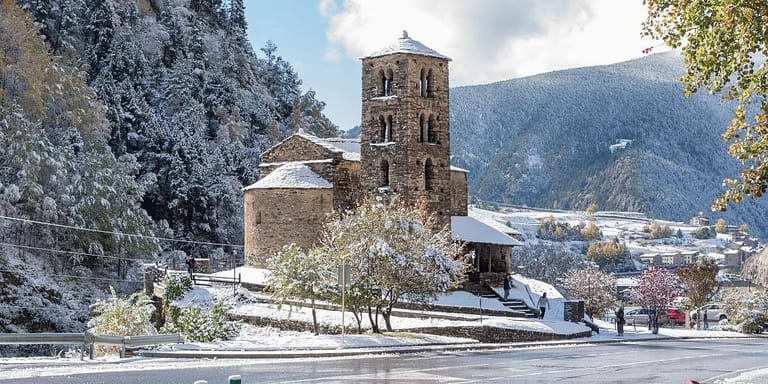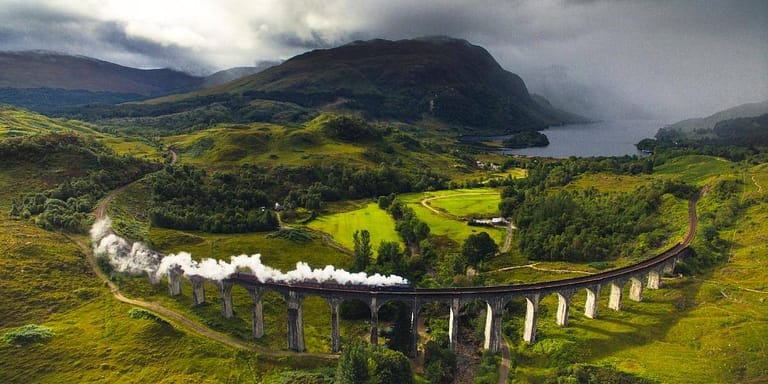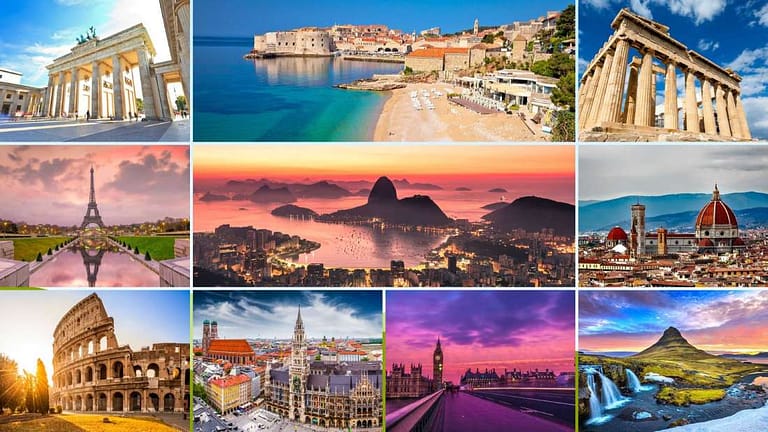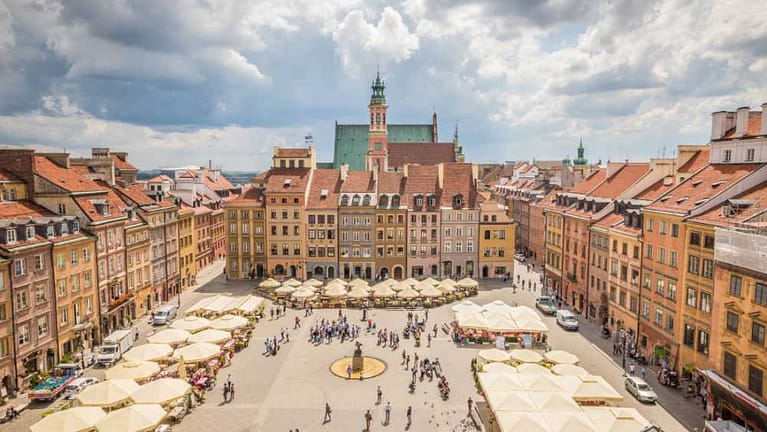Interesting & fun facts about Poland & Polish culture
Poland has been flying under the radar of most tourists visiting Europe, but it has been gaining popularity lately. Whether you are planning to visit Poland or have already been there, here are some fun facts about Poland and the Polish people you might not know about.
Let’s cover the basics before we get into all the fun facts about Poland. The Republic of Poland is situated in central Europe, bordered by the Baltic Sea to the north. Its capital is Warsaw, and the head of state is the prime minister. Poland shares borders with Germany, the Czech Republic, Slovakia, Belarus, Ukraine, Russia and Lithuania.
Poland is the 9th largest country in Europe, with a population of over 38.5 million people and a land area of 312,685 sq km (120,728 square miles). While Poland is a member of the European Union, it still uses its currency, the Zloty. The national colours of Poland are white and red, and you’ll find them proudly displayed around the country.
Affiliate Disclosure – This post contains affiliate links. If you make a purchase through these links, I may earn a commission. This doesn’t affect your purchases or any fees you may pay for the product or service. Read more in my DISCLAIMER.
Poland is a lot older than you think
If you believe the legend, once upon a time, three brothers – Lech, Czech and Rus of the Slavic tribes – wandered the area. One day, they (or just Lech) stumbled upon a large oak tree growing on a hill with a large nest in the branches. Lech saw a white eagle soar from the nest and took this as a sign to settle here.
This was the start of Poland and Polish history, with the eagle as its symbol. The other brothers moved on, creating what then became the Czech Republic and Russian lands. However, according to the Polish court documents, Poland’s history begins in 966, with the pagan ruler Mieszko I converting to Christianity.
The Kingdom of Poland officially kicked off in 1025. The first coronation took place at the Wawel Cathedral in Kraków (Cracow). Mieszko was the first Christian leader of Poland, and he also founded the Piast dynasty that ruled till 1385.


Poland had different capitals before
This makes the list of fun facts about Poland because it’s an interesting story. Poland’s first capital was Gniezno. The name derives from the word “gniazdo,” Polish for a nest. Remember the eagle nest that Lech took as a sign? We’re talking about the same settlement.
Cracow became the capital in 1038. The royal city became a leading centre of trade, culture and power. Polish kings lived, ruled and died here. The town experienced significant growth and expansion over the centuries. Today, you’ll still find several great European architectural styles, from Medieval, Romanesque, Gothic and Renaissance to Baroque and Art Nouveau.

King Sigismund III Vasa moved Poland’s capital to Warsaw in 1596. Due to its central location between Crackow and Vilnius, Warsaw was the perfect place of power for what became the Polish–Lithuanian Commonwealth.
It has an incredibly Rich history
Poland’s history is one of the most interesting Poland facts. The country is no stranger to invasion and occupation. Between 1600 and 1945, Poland had to defend itself from invasion 43 times. Polish forces fought battles against the Swedes, Ottomans, Austrians, Prussian and Russians. Not to mention Hitler during World War II.
It’s a fun fact about Poland that most people don’t know about. Poland was once a powerful kingdom in Europe. It stretched from the Baltic Sea to the Black Sea. Poland was also one of the first countries in Europe to adopt a written constitution in 1791, and the Polish constitution was second in the world after the US.
Between the 14th and 16th centuries, Poland had its golden age. A few centuries earlier, the union of Polish and Lithuanian rulers gave way to the Polish-Lithuanian Commonwealth (1569–1795). The freedom of confession and religious tolerance, unique in Europe at that time, attracted immigrants from other nations.
After the glory of the Polish-Lithuanian Commonwealth came what became known as the partition of Poland. Poland was divided between Russia, Prussia, and Austria in three separate phases (1772, 1793, and 1795). It ceased to exist as a free nation for 123 years until the end of World War I.
Poland’s geography covers it all
Poland has incredible natural landscapes that offer plenty of outdoor fun. You can enjoy the sandy beaches along the Baltic coast, explore the country’s national parks or head to the mountains. The Tatra mountains are the largest, but you can also enjoy the Bieszczady and Karpaty mountain ranges. Here you can do some serious hiking, climbing and skiing.

Forests make up over 30% of the country, with the Bialowiea Primeval Forest alone covering about 380,000 acres (150,000 hectares). This forest is also home to about 800 bison, which were brought back from extinction in the wild by breeding and reintroduction programs.
Poland is also home to dunes (Pomerania region), wetlands (Biebrzanski National Park) and islands (Wolinski National Park). It is also home to one of Europe’s largest lake districts – Mazury (Masurian Lakeland), with over 2,000 lakes.
famous Polish people
- Joseph Conrad (Teodor Józef Konrad Korzeniowski), the famous English writer known for short stories and novels, was born into the Polish nobility in 1857.
- The musical composer Frederic Chopin (Fryderyk Franciszek Chopin) was born in Zelazowa Wola, near Warsaw, in 1810. He left Poland in his 20s and lived in France for the rest of his life. He died in 1849 and is buried in the Père Lachaise cemetery in Paris.

- Many know her as Marie Curie (Maria Sklodowska), the first and only Nobel laureate in two different sciences and the first woman to win a Nobel Prize. She was also the first female professor at Sorbonne University. Marie was born in Warsaw in 1867 and moved to Paris in 1891. She is famous for discovering Polonium and Radium, as well as her work with radioactivity. Today, her remains are interred at the Pantheon in Paris.
- Pope John Paul II, born Karol Józef Wojtyla, is revered in Poland. He was the first non-Italian pope in 455 years. His image is on numerous items, including plates, pictures, and even tapestries.
- Astronomer Nicolaus Copernicus (Mikolaj Kopernik) was born in Torun in 1473. He is best known for being the first to suggest that the Earth is not the centre of the universe. His work, On the Revolutions of the Celestial Spheres, was a significant event in the history of science.
- The people behind Commodore 64, The Witcher and the Matrix are also Polish.
Poland facts about food
We wouldn’t have fun facts about Poland without talking about Polish food. It is mainly based on meat, potatoes and cabbage. From pierogis (stuffed potato dumplings) to bigos (cabbage and meat stew) and everything in between, Polish food involves some of these ingredients or a combination thereof. Pickled foods and cold cuts also play an integral role in the Polish diet.
Cabbage wasn’t always a huge part of Polish cooking. In the 16th century, the Italian-born Bona Sforza became the queen of Poland. She brought with her cooks and gardeners and popularized the use of numerous vegetables in Polish cuisine. While vegetables like leeks, lettuce, celeriac and cabbage were known in Poland, they were not widely used by ordinary people. Even today, some of these vegetable groupings are referred to as “wloszczyzna,” meaning of Italian origin (Wlochy is Italy in Polish).


While Polish vodka is part of the Polis culture, beer is also widely consumed. Poland has the fifth-highest beer consumption per capita. Some people drink their beer with raspberry or blackcurrant juice (piwo z sokiem). A hot beer with cloves and cinnamon, sweetened with honey, is also a popular choice (piwo grzane).
Additional items that make up the fun facts about Poland in the food category are paczki and zapiekanka. Paczki are fried doughnuts with filling, usually plum jam, but there are many other fillings like apple, blueberry or cream-filled. You can eat them at any time, but they are traditionally consumed on Fat Thursday before Ash Wednesday. Zapiekanka is a sliced piece of a baguette topped with cheese, mushrooms and ketchup. You can get them at various stands and carts.
The Polish language is a tongue twister!
Funny facts about Poland include its language. Polish is an Indo-European language and part of the West Slavic language family, and it’s closely related to Czech, Slovak and Sorbian. Some of the other languages in this family include Bulgarian, Croatian, Macedonian, Russian and Ukrainian.
The Polish alphabet is based on the Roman alphabet and consists of 32 letters. Several of them you won’t find in any other alphabet. In addition to these “rustling” letters, numerous combinations called “digraphs” add more challenging sounds. The language is filled with diminutive forms for nouns as well as names. For example, tea is “herbata,” but you can say “herbatka.” It still means tea. The language also involves word formations, which are very challenging to explain. For example, the verb “leciec” (to fly) can lead to “wyleciec” “naleciec,” “uleciec,” “poleciec” and “przeleciec.”
Cultural Facts about Poland
This category could be its own list of fun facts about Poland since these customs and practices are fascinating to outsiders.
- A name day is a bigger celebration than a birthday: In Poland, birthdays take a backseat to name days “imieniny.” They are associated with days commemorating different saints. Name days are celebrated with parties, food and drink just like a birthday.
- Don’t wear hats indoors: It is considered rude to wear a hat indoors. So, if you don’t want to offend anyone, take the hat off when you go inside.
- Kissing a woman’s hand is still a thing: What might be considered old-fashioned and weird in other countries, kissing a woman’s hand is still a thing in Poland.

- Differentiation between male and female last names: Polish surnames change with gender. For example, a man’s last name would be Kowalski, and for a woman, it is Kowalska. It doesn’t matter whether you’re married or not.
- Mushroom picking is also a thing: Going to a forest at the end of summer to look for edible mushrooms is a common activity.
- Polish inventions: Polish inventions aren’t necessarily part of the fun facts about Poland, but they provide some interesting facts about Poland itself. Ignacy Lukasiewicz invented the Kerosene lamp in 1853, and Jan Szczepanik invented the bulletproof vest in 1901.
- Religion: Most Poles are Roman Catholic and Poland is one of the most religious countries in the world. The country’s legislation on abortion is one of the strictest in Europe. Its severity puts women’s and adolescents’ lives and well-being at risk, proving that women’s rights are not seen as equal.
Poland is home to the world’s largest castle
Malbork Castle, located in the town of Malbork, is one of the largest brick castles in the world. It was built by the Teutonic Order, a medieval German military order, as its headquarters in the 13th century. The castle, a UNESCO World Heritage Site, is an outstanding example of Gothic architecture, boasting impressive defensive features such as thick walls, towers, and moats.
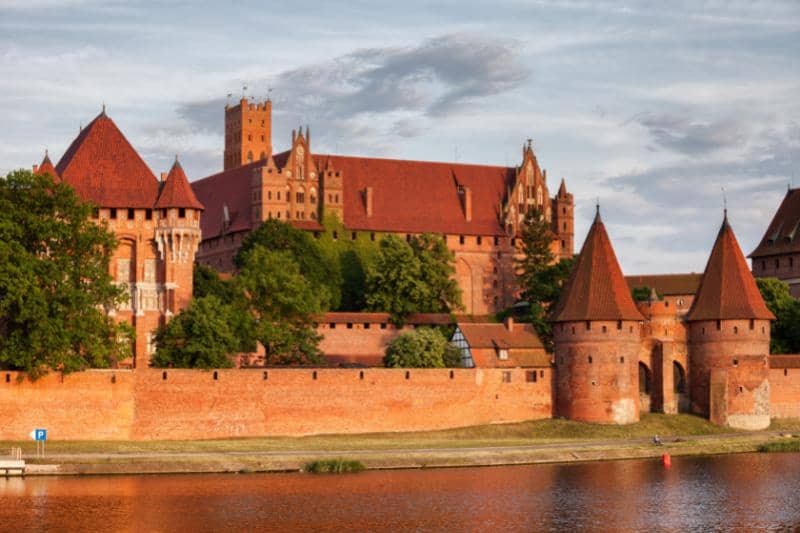
World’s oldest salt mine is in Poland
The 800-year-old Wieliczka Salt Mine, located near Kraków, is one of the world’s oldest salt mines operating continuously since the 13th century. It’s a UNESCO World Heritage Site and a testament to Poland’s rich history and industrial heritage.
The mine features breathtaking underground chapels, sculptures, and even a cathedral, all carved entirely out of salt by miners over the centuries. The intricate designs and sheer scale of these underground marvels are awe-inspiring and something I recommend seeing.
Final thoughts about fun facts about Poland
Poland has come a long way in recent years, and it’s still trying to forge its path. The number of visitors to Poland has steadily increased over the years as many have discovered its many charms. They are discovering all the great attractions Poland offers, from outdoor adventures to culinary delights and historic sites. So, what are you waiting for? Discover Poland and get ahead of the crowds.

